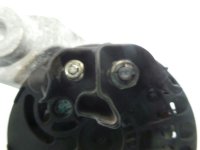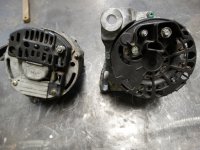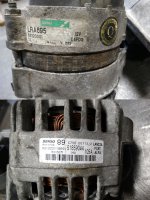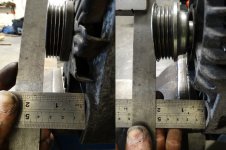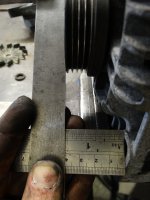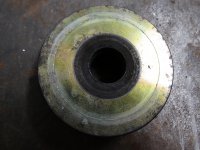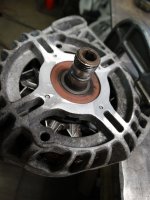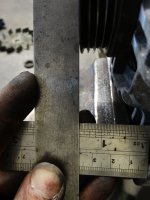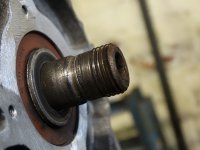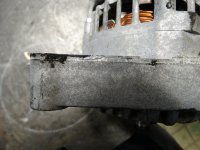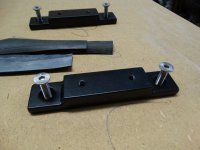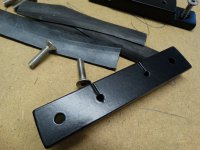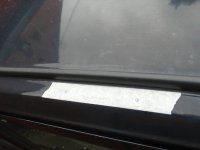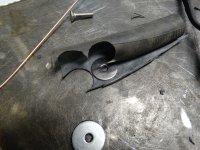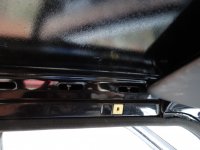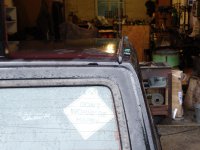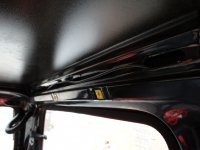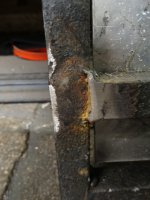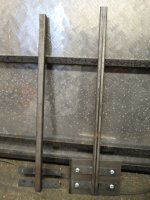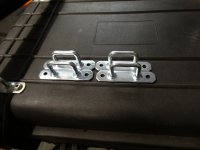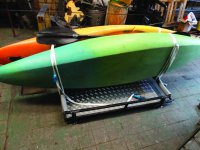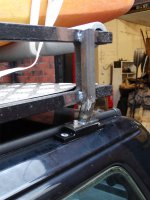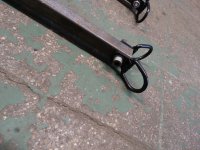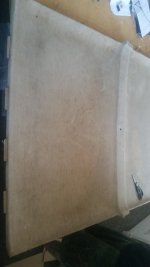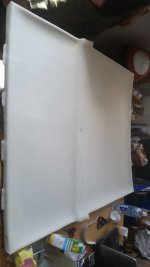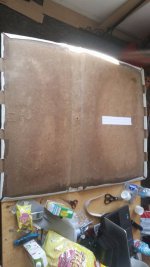So finally got started on the roof rack (with about a week and a half to go before it needs to be capable of transporting the boats up to the Cairngorms

). And at pretty well bang on 5pm on Friday we ran out of welding gas... supplier shut until Monday morning

. On with the bits I can do then!
Initially I was just going to fit the rack from Northernchap with a few little modifications to take the boats, then at a much later date make a whole new one. However, it was brought to my attention (by Jenny) that it would be much more practical if the roof rack could be easily removed, so when we do not need to transport things we can get better mpg (and potentially do something cool and vinyl on the roof!).
The solution seems to be to fit mounting points permanently to the car that the rack then bolts on to, so removal of the roof lining would not be required. The other advantage of this is as long as this bit is well made, the rest can be sorted at a later date, given how little time I've got it means I can just get welding and hammeriting the rack itself

.
Priority one then was to make the mountings, I measured the spacing on the access holes to get into the top section of the roof and made these...
View attachment 181317
So 2 lengths of 25x8mm flat bar welded together! each one has 2 countersunk M6 holes to take the bolts on to the car itself and then 2 holes threaded to take M6 bolts. I carefully measured and drilled each one so they were all exactly the same, this means if in the future I make different roof bars it will be much easier to make feet that fit. I drilled the threaded holes all the way through for 2 reasons, one it's much harder to tap a decent thread in a blind hole and two it means any rain water that makes it's way in can go out the bottom, so I cut little drain channels in the underside. As they will be mounted right on the edge of the roof (outside of the seam), it is on a slope so should drain quite well. Got them all zinc electro plated and powder coated ready during the week.
View attachment 181318
As you can see in the first picture I also cut strips of rubber out of an old bicycle inner tube, hopefully this should restrict any water getting to the holes (which I did paint up but I would guess will be much more vulnerable to rust as the bolts could chip the paint), it should also stop metal on metal wear between the bracket and the roof and hopefully help spread the load a little on the roof.
I worked out the positioning by measuring in from the end of the covered roof seam. I'd put bits of tape down the inside to the windows so I could see where the cut outs were to get the nuts in. I then used the mountings as a template and marked where the holes needed to be.
View attachment 181319
Bit worrying drilling into it but all the mountings went on no problem (well I do wish I'd put the front ones about 10mm further back would have made it a little easier!). On the inside I used stainless penny washers to prevent any risk of the bolts pulling out, again I did not want the washers rubbing on the metal of the car roof so I used more old inner tube to back the washers with rubber. I used spray adhesive to glue the rubber on to the washers, which in hindsight I should have done with the rubber under the mountings too (they stick out a little as were hard to keep in position when tightening the bolts).
View attachment 181320
View attachment 181325
The other advantage of backing the washers in rubber was by making the hole a little tight the washers held themselves on the bottom of the bolt so I was able to leave them there and get the nuts on without them falling into the abyss

.
I used stainless Nylock nuts for these as I really do not want them working loose and in the future I may even make the rack lockable to the car, so anything locked to the rack is secure, though might be overkill! This way the only way these feet are removable is by getting in the car and the headlining out. I used a ring spanner with some insulation tape on to get the nuts into position, the once I could feel the resistance of the nylon I removed it and continued with the open end of the spanner. Something I learnt the hard way is if you try and use the ring spanner too long then in this case (with 25mm long bolts) you soon get to a position where the spanner cannot be removed!
View attachment 181321
The insulation tape worked a treat, though I should have refreshed it half way through and I did eventually lose one nut into the frame of the car, though I recon that's pretty good going considering I was working on my own:slayer:.
View attachment 181328
So job one on the roof rack front finally completed!
View attachment 181326
View attachment 181327
I've covered the mounting holes with insulation tape for the minute, I'm going to get some rubber washers and then leave short bolts in when not in use to keep the rain out.
While the headlining is out (as is the welding gas:bang

I figured I might as well run the speaker cables into the planned location for the speakers. I've run them under the carpet to the little access panels behind the doors, then up inside the bodywork, they will then run across under the headlining and out where the rubber blanking plates are either side of the tailgate. Got a mate coming to help me box the speakers in tomorrow, another priority for the trip!
View attachment 181329
So once I've got more welding gas I need to fabricate new legs and feet to connect to my new mounting points. When I cut the old one off I did find that quite a few of the welds had no penetration at all, picture below shows where I cut one of the legs off, this was welded on all four sides, but only 2 had welded to both the leg and the rack itself, another good reason for making a new one myself.
View attachment 181330
Having said the above, I've stood on the rack and everything feels good and solid so quite happy in terms of the Scotland trip. Before I ran out of gas I welded an offcut of 3mm sheet to the front with holes drilled to mount a vertical length of 20x20x2.5mm box section.
View attachment 181331
It was a little tricky getting a decent weld as the steel was fairly pitted and rusty. I've made the uprights for front and back and once I've got welding gas will attach the one at the back too.
View attachment 181332
Then I've got some D-ring type fixings for attaching webbing straps for the front and back which I will bol on. They are only zinc plated but I've bought some before and had them on my bike top box (you can actually see them in the photo below) and they are lasting pretty well.
View attachment 181333
I've also got some anchor points (like the ones onemanmade mentioned in the roof rack thread) to attach to the tops of the uprights too, they are ordered in so as soon as I get them I can bolt them on and with a bit of the grey pipe insulation from screwfix we'll be good to go! Well once I've lined up the feet with the fixing points

So stereo hopefully sorted tomorrow then on from there. I'm going to recover the headlining too, though not got the fabric in yet. I know this breaks my rule about important stuff before cosmetic but while it's out it makes sense, don't want to risk damaging it and also I can cover the speaker boxes in the same fabric so should look pretty smart

.



